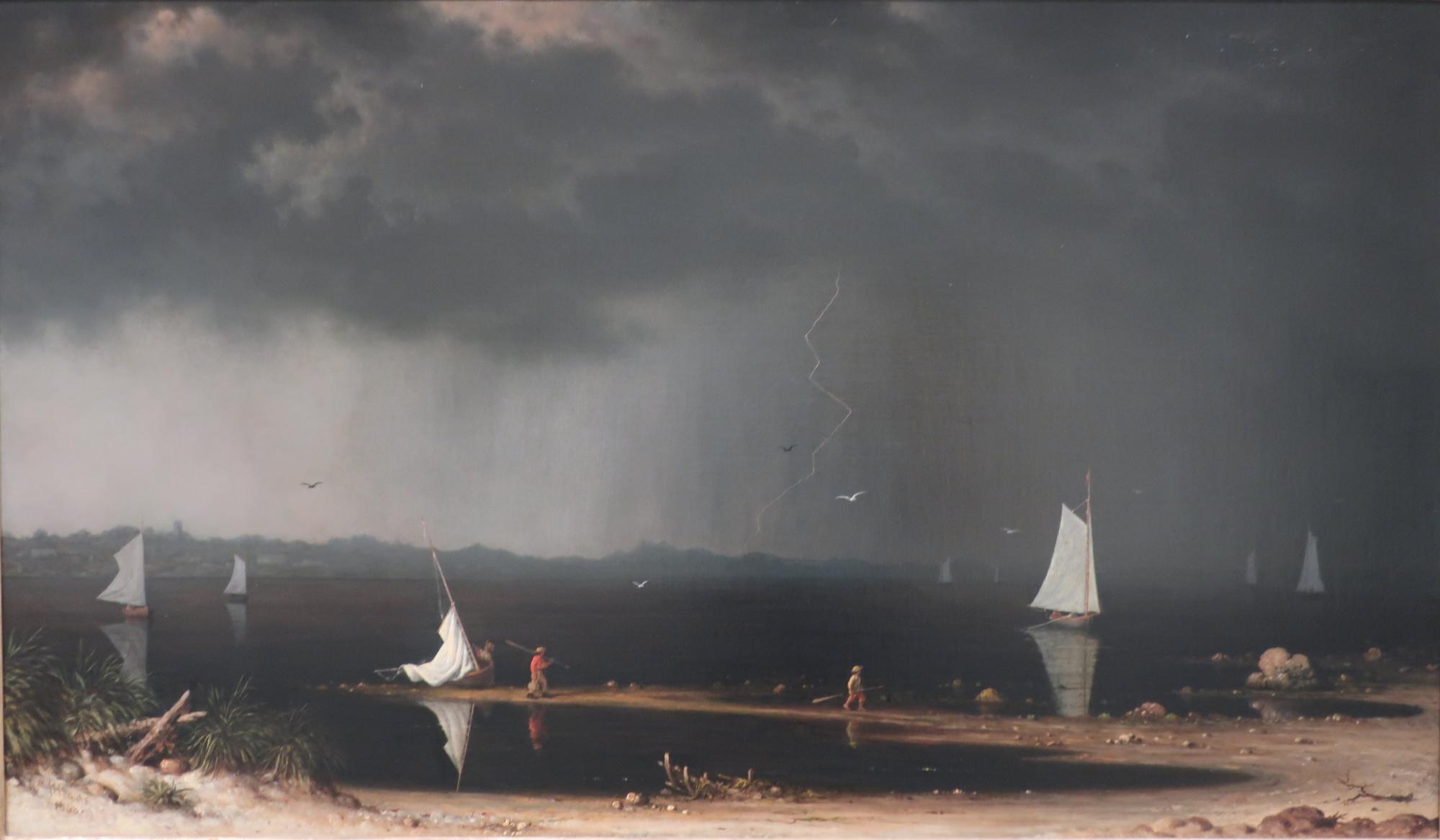Created by Mark Littke on Tue, 03/19/2024 - 04:24
Description:
In this painting of hefty moods, one can see that there are some young boys walking away from a shore with small sailboats whilst a lightning storm approaches. However, this work of art draws a deeper meaning from its connection with life and nature. From this portrait, one may notice the inevitability of the storm as much as the nonchalant, peaceful dispositions of the walking boys. It seems, from this intriguing point of view, that Heade's painting tells the observer a great message about embracing the inevitability of death and one's peaceful rebirth among the cycles of nature forever. This rebirth seems to be accomplished through accepting a simply, pleasant life that obeys the sometimes harsh changes of life rather than chasing the top of social and economical heirarchies encouraged by American society. This observation seems especially true when some researchers write that Heade is a prime example of an American artist who recognizes the power of landscapes that testify to a new spirit of individualism and exploration in the ethos of American art and literature (Miller). The death of one's life is a joyous occasion to artists such as Heade when one rejects the rat race of American society and embraces the individual spirit bequeathed by the vast American wilderness. Heade's philosophy in his works is even more intriguing when one notices that the lightning and thunderstorms in his paintings symbolize the passage of the United States through turmoil, particularly during the Civil War ("Thunder Storm"). Not only did renowned artists such as Martin Heade recognize the inevitability of change and the death of one into a greater life with nature, but the great poet William Cullen Bryant recognized these ideas in his works as well.
Bryant writes in his well-known and solemn poem, Thanatopsis, "Earth, that nourished thee, shall claim/Thy growth, to be resolved to earth again,/And, lost each human trace, surrendering up/Thine individual being, shalt thou go/To mix for ever with the elements" (Bryant). Bryant understands the profound yet natural destiny of every human in death, but he also, like in this painting by Heade, reveres the power of life in nature and the life after death swallowed up and comforted by nature. Furthermore, Bryant writes, "Approach thy grave,/Like one who wraps the drapery of his couch/About him, and lies down to pleasant dreams" (Bryant). Much like Heade, the American Bryant discourages people from frantically addressing the busy worries of society in their own lives and tells them to instead live with nature and all its changes to the inevitable rest of death and being one with nature in an afterlife similar to a peaceful life within nature before mortal death.
https://en.wikipedia.org/wiki/Luminism_(American_art_style)#/media/File:Martin_Johnson_Heade_-Thunder_Storm_on_Narragansett_Bay_ATC.jpg
Bryant, William Cullen. “Thanatopsis.” Cove Studio, studio.covecollective.org/anthologies/eng-235-survey-of-american-literature-sp24/documents/thanatopsis. Accessed Mar. 2024.
“Thunder Storm on Narragansett Bay.” Thunder Storm on Narragansett Bay | Amon Carter Museum of American Art, www.cartermuseum.org/collection/thunder-storm-narragansett-bay-197717. Accessed 19 Mar. 2024.
Copyright:
Associated Place(s)
Part of Group:
Featured in Exhibit:
Artist:
- Martin Johnson Heade


